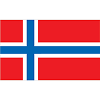🗣️ English in the land of fjords: is it enough to work in Oslo and Bergen
📝 Why read
This article is a quick guide for those building a career in the capital region and the ‘city of seven hills.’ We'll break down how to figure out the working language from a job posting, where you're more likely to find English-speaking teams, what to ask during an interview, how to communicate in mixed EN/NO teams, and how to brush up on your Norwegian in three months without breaking a sweat. Fact: the level of English proficiency here is high, and Oslo is consistently ranked Very High by EF EPI, which makes everyday life and onboarding easier.
💼 Working language: how to understand it from a job listing
🔍 Look for ‘international team’ and where to find it
- In the Responsibilities/Requirements sections, look for: working language: English, English fluency, international team, documentation in English, Norwegian is a plus.
- On the FINN, The Hub, and NAV/Arbeidsplassen platforms, some of the ads are published directly in English — this is a good indicator. If the ad is in Norwegian, but the stack/clients are global, check with the recruiter anyway.
👥 Customer-facing, documentation, call language
- If the description contains a lot of ‘frontline’, ‘customer support’, “retail”, ‘public services’, ‘HSE’, you will almost certainly need Norwegian at a working level (often B1–C1). In public and safety-critical roles, the NO requirement can be strict (example: firefighters in the capital — teams and safety teams in Norwegian).
🏙️ Oslo vs Bergen: where English ‘holds sway’ in offices and with clients
🚀 Capital region: product, outsourcing, startups
- Oslo has a higher proportion of international teams and incubators; start-up vacancies are often advertised in English, especially in product and data roles. Good entry points are The Hub and the ecosystem of accelerators with offices in Oslo/Bergen.
🌊 ‘City of Seven Mountains’: media/maritime/energy domains
- In Bergen, there is a higher proportion of domains with local B2C/muni contact (schools, healthcare, frontline services), where Norwegian will be required. The municipal government itself directly specifies the requirements for some roles (including education/SFO).
Nuance: in university/research, R&D and IT departments, EN may be used, but for public services, NO is more common. Check each case according to the description and ask questions.
⚖️ Product/outsourcing/startup vs government/B2C service
- Product, outsourcing, startup. Higher chance of EN-first (code base and documentation in English, common corporate language is EN). Back office and export roles are often ‘ok with English’.
- Government, municipality, B2C service. Often require B1–C1 Norwegian (communication with residents, documentation, security). Example: assistants and teachers in barnehage — fixed language requirements.
🎤 Interviews and onboarding in EN
📋 What to ask the recruiter (short checklist)
- What is the working language in chat/email/documentation?
- What is the language of weekly meetings and 1:1s? Is there EN-sync for ‘mixed’ teams?
- What about clients: is there customer-facing work in NO?
- Ramp-up: is there an onboarding package and a mentor in EN?
- Is a NO course required and does the company pay for it?
Tip: the Oslo kommune page advises not to be afraid to write, even if the ad is in NO: clarify the requirements directly.
💬 Correspondence, meetings and ‘mixed’ teams
Templates (short)
- Polite EN start in a NO thread:
- “Hi all, English is most comfortable for me — is it okay if I keep notes and updates in EN? I’ll summarise in NO if needed.”
- Note for the meeting:
- “Agenda (EN), decisions (EN), action items (EN+NO for customer-facing).”
- Switching to NO: appropriate for client/municipal contacts; keep EN summaries of decisions within the team so that no one is left out.
⏳ 3-month plan: live in EN and brush up on NO at the same time
🎯 Mini-goals A1 → A2
- Weeks 1–4: phonetics and basic phrases for your role (greeting, scheduling, safety/IT desk).
- Weeks 5–8: Bokmål vocabulary by domain (your stack, department names, basic verbs).
- Weeks 9–12: meeting chat templates in NO + ‘summary’ of decisions in EN.
💬 Practice ‘anchors’
- 10 minutes of reading internal announcements in Norwegian per day.
- Tandem with a colleague: you speak English to them, they speak Norwegian to you (15 minutes per week).
- Visual dictionary: 30–50 terms related to your role on the wall/in notes.
Where to find NO levels and sample tests: Oslo kommune page with links to A1–C1.
🚶 Quick route (3–5 steps)
- Filter The Hub/FINN/NAV by Oslo/Bergen and the keywords English / international team. Save your searches.
- In the cover letter, include one paragraph about your EN onboarding and plans for NO.
- During the screening, ask 5 language questions (language of meetings/docs/clients/onboarding/courses).
- At the test meeting, send EN minutes + a short NO summary.
- Write down a three-month NO plan in your calendar: 3×20 minutes per week.
Working in English in the capital and on the west coast is realistic — especially in product and start-ups. But the closer the task is to citizens and security, the higher the chance of strict requirements for norsk (B-level and above). Read the job description, clarify during the interview, record the agreements — and calmly improve your Norwegian ‘in the background’ without losing momentum.
FAQ
Yes, often in startups, product and tech roles English is fine, but in public sector or customer-facing jobs Norwegian is usually required (B1–C1).
Look for tags like “international team”, “English fluency” or “Norwegian is a plus”; if the ad is in English, it’s usually a clear sign.
Check the language of meetings, documentation, onboarding, and whether client contact requires Norwegian.
Use English for notes and summaries, but provide short Norwegian highlights for client-facing points so no one is left out.





1 comment
Log in to leave a comment